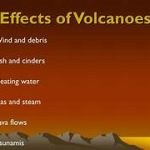The Relationship Between the Earth and Celestial Rocks
Introduction
The Earth has always been connected to celestial rocks—asteroids, meteoroids, comets, and meteorites—that travel through space. These extraterrestrial objects have shaped our planet’s geological and biological history through impacts, material exchange, and gravitational interactions.
From the role of asteroid collisions in mass extinctions to the scientific importance of meteorites, understanding the relationship between the Earth and celestial rocks helps us study planetary evolution, space exploration, and potential future threats from space.
This article explores the nature of celestial rocks, their interactions with Earth, and their significance in shaping our planet’s past and future.
1. Understanding Celestial Rocks
Celestial rocks, or space debris, originate from different parts of our solar system. These include:
a) Asteroids
- Large rocky bodies, primarily found in the Asteroid Belt between Mars and Jupiter.
- Range from a few meters to hundreds of kilometers in size.
- Some asteroids have orbits that bring them close to Earth, known as Near-Earth Objects (NEOs).
- Example: Eros, a near-Earth asteroid studied by NASA’s NEAR Shoemaker spacecraft.
b) Meteoroids
- Smaller fragments of asteroids or comets, usually less than a meter in diameter.
- When they enter Earth’s atmosphere and burn up, they create meteors (shooting stars).
- If they survive atmospheric entry and reach the Earth’s surface, they are called meteorites.
c) Comets
- Icy bodies originating from the Kuiper Belt and Oort Cloud beyond Neptune.
- Consist of dust, frozen gases, and organic compounds.
- Develop a glowing tail when approaching the Sun due to ice vaporization.
- Example: Halley’s Comet, which orbits the Sun every 76 years.
2. The Impact of Celestial Rocks on Earth
Celestial rocks have played a significant role in Earth’s history, influencing both its geology and biological evolution.
a) Early Formation and Planetary Evolution
- During the early solar system (~4.5 billion years ago), frequent asteroid and meteorite collisions contributed to Earth’s growth.
- Heavy bombardment delivered water and organic molecules, potentially aiding the origins of life.
- Lunar formation theory suggests a Mars-sized celestial body (Theia) collided with Earth, leading to the creation of the Moon.
b) Meteorite Impacts and Mass Extinctions
Large celestial rock impacts have triggered catastrophic events in Earth’s history.
1. The Chicxulub Impact (66 million years ago)
- An asteroid (10–15 km in diameter) struck near present-day Mexico.
- Caused wildfires, tsunamis, and blocked sunlight with dust, leading to the extinction of 75% of life, including the dinosaurs.
2. The Tunguska Event (1908)
- A meteoroid exploded over Siberia, flattening 2,000 km² of forest.
- Released energy equivalent to 10–15 megatons of TNT but left no crater.
3. The Chelyabinsk Meteor (2013)
- A 20-meter asteroid exploded in Earth’s atmosphere over Russia, injuring over 1,500 people from shockwaves.
- Highlighted the need for better asteroid detection systems.
c) Contributions to Earth’s Composition
Meteorites contain valuable information about the solar system’s origins.
- Carbonaceous chondrites contain amino acids and organic compounds, supporting theories that extraterrestrial material contributed to life.
- Iron meteorites have helped humans understand the composition of planetary cores.
- Stony meteorites resemble Earth’s mantle and provide insights into planetary geology.
3. The Role of Celestial Rocks in Modern Science and Exploration
a) Space Missions to Study Asteroids and Comets
Scientists have launched missions to study celestial rocks up close.
- NASA’s OSIRIS-REx mission collected samples from asteroid Bennu, returning material to Earth in 2023.
- Japan’s Hayabusa-2 mission retrieved asteroid samples from Ryugu to analyze early solar system chemistry.
- ESA’s Rosetta mission successfully landed a probe on Comet 67P, revealing information about its composition.
These studies help scientists understand planetary formation, resource potential, and asteroid impact risks.
b) Celestial Rocks as Future Resources
Asteroids contain valuable metals, including platinum, nickel, and iron, sparking interest in space mining.
- Companies like Planetary Resources and NASA are exploring asteroid mining to extract materials for space colonization.
- Water in asteroids could be converted into rocket fuel, enabling deep-space missions.
c) Asteroid Impact Prevention Strategies
NASA and international space agencies track Near-Earth Objects (NEOs) to prevent future collisions.
- DART (Double Asteroid Redirection Test) successfully altered the orbit of asteroid Dimorphos in 2022, demonstrating planetary defense techniques.
- Future strategies include nuclear deflection, kinetic impactors, and gravity tractors to divert hazardous asteroids.
4. Cultural and Historical Significance of Celestial Rocks
Celestial rocks have fascinated human civilizations for centuries.
a) Meteorites in Ancient Cultures
- The Kaaba’s Black Stone in Mecca is believed to be a meteorite.
- Ancient Egyptians and Mesopotamians crafted tools from iron meteorites before discovering iron smelting.
- Indigenous cultures saw shooting stars and meteor impacts as divine messages or omens.
b) The Role of Celestial Events in Mythology
- Greek and Roman myths linked meteor showers to celestial battles.
- The Leonid Meteor Shower was recorded in Chinese and Islamic astronomy over 1,000 years ago.
- Modern pop culture includes celestial rock threats in films like Armageddon and Don’t Look Up.
5. Future Interactions Between Earth and Celestial Rocks
a) Space Travel and Human Expansion
- Celestial bodies like Mars’ moons Phobos and Deimos could serve as stepping stones for human colonization.
- Understanding asteroid composition may lead to better space habitats and self-sustaining missions.
b) Risk Assessment for Future Impacts
- Scientists estimate a 1 in 500 chance that a large asteroid will strike Earth in the next century.
- Continuous monitoring and early detection will be crucial in preventing potential disasters.
c) Advances in Planetary Science
- Continued research into meteorites helps scientists model Earth’s interior.
- Asteroid and comet studies improve our understanding of water distribution in the solar system.
Conclusion
The relationship between Earth and celestial rocks is one of both creation and destruction. Throughout history, meteorite impacts have shaped Earth’s landscape, influenced biological evolution, and provided valuable scientific knowledge. While celestial rocks pose risks, they also offer opportunities for space exploration, resource mining, and planetary defense.
By studying asteroids, meteoroids, and comets, scientists can unlock secrets about our past, protect our future, and pave the way for humanity’s expansion into space. As technology advances, our ability to monitor, explore, and harness celestial rocks will continue to grow, reinforcing our connection to the vast universe beyond Earth.


